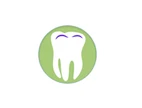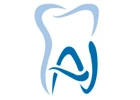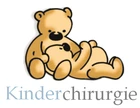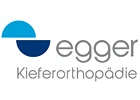OrthodonticsOrthodontics Our study specialises in orthodontics. We intervene to correct overbite and dental misalignment problems. Such problems are caused by the misalignment of the superior maxillary and the mandible/jaw or even by an incorrect position of the teeth. They are often associated with other more or less evident functional disturbs (such as atypical swallowing), with postural disturbs (such as neck pain), and, more in general, with pathologies/diseases of the spinal cord. This is why, when resetting the correct alignment of teeth and dental arches, we contribute towards improving the general health of our patients. Our work influences the person’s general well being because: • we create personalised solutions • we restore the mouth’s functions (chewing, breathing, talking…) • we help the functional balance of all body parts determining the overall postural balance • we give the smile its natural harmony back. How we work We don’t give pre-made treatments, but shape every action on the particular needs of each patient: • we start with an accurate analysis of the person to verify possible problems in the mouth-system, the teeth’s occlusion, the functionality of the temporo-mandibular articulation, the aesthetics and harmony of the face in relation to the mouth’s functionality, the posture and the overall health status • we complete the analysis with some preliminary examinations that let us obtain specific data about the mouth’s situation • with such data we can make an evaluation of the mouth’s functionalities, symmetries and proportions • if the overall situation requires an intervention, we proceed to study targeted solutions: through software of diagnosis and dental alignment we plan the necessary movements that the teeth will have to make and that can be obtained using specific orthodontic supports (braces or clear aligners). The intervention plan is always defined together with the patient: we illustrate their mouth’s characteristics, show how their occlusion works and the problems it has caused or will cause, explain the possible solutions and specify times and costs of each therapy. At this point the patient has all the informations to decide if and how to proceed with their treatment. Study and analysis – Workflow Our detection instruments are completely digitalised: every examination and study is executed with last generation digital equipment and specific software. From pictures to the realisation of models of the arches, from 2D x-rays (orthopantomography or panoramic x-rays, face/cranium x-rays) to 3D x-rays or TAC or CBCT, from the cephalometric analysis to the simulation of the teeth’s movements. This way the whole phase of diagnosis and study that brings to the definition of the solutions to enact becomes for our patients much more precise and not at all annoying. We replaced the traditional alginate or silicon impressions with an intra-oral scanner, the most precise and reliable on the market to this day. This way the acquisition of data about occlusion and mouth becomes much quicker and more detailed. The digital model is then evaluated through a three-dimensional mensuration software that allows a precise diagnostic set-up. Furthermore, the acquisition of an accurate documentation, both photographic and radiographic, lets us thoroughly analyse every detail. When necessary, we also make a 3D radiographic examination to check the presence of possible impacted teeth, incorrect articular positioning or other anomalies with even more precision. Orthodontics for kids It’s important to intervene timely: examination and tempestive diagnosis are fundamental for children. This is because, in young patients, articulations and bone structure are very flexible and adaptive, so the possibilities to have good results are much wider than if the treatment starts in adult age. In a child the most frequent problems are narrow palate (reduction of the superior arch’s width) and misalignment of dental arches: we intervene to create space for the definitive teeth and to favour maxilla centering without impeding the natural mobility of muscles and articulations. We choose solutions that are not very invasive or uncomfortable for the child and that do not require their active collaboration. We follow young patients throughout their growth, from baby teeth to definitive ones, and work in synergy with osteopaths who help us understand what is best for the child’s general posture. Orthodontics for adults In adults we intervene to correct: • functional problems (problems in the temporo-mandibular articulation, that cause pain or create non physiological noises) • aesthetic problems (teeth misalignment) • problems of rebalance after the loss of teeth caused by cavities or parodontal problems (issues with the gums) For adults as well, we create aimed rehabilitative orthodontic treatments and work with sectional orthodontic techniques (which interest a single sector of the mouth) and with clear aligners. When occlusion issues require a surgical-orthodontic intervention on the bone structures, we work in synergy with a maxilofacial surgeon. We manage all the preparatory work: first we prepare the dental arches for the intervention towards the final result, then we study and position the supports (plaques) that will serve as guides for the surgery. Dr Combi is always present in the operating theatre to follow every step and evaluate(?) and decide in real time with the surgeon eventual corrective interventions. During the post-operation phase, we work to refine and stabilise the surgically obtained results.
















